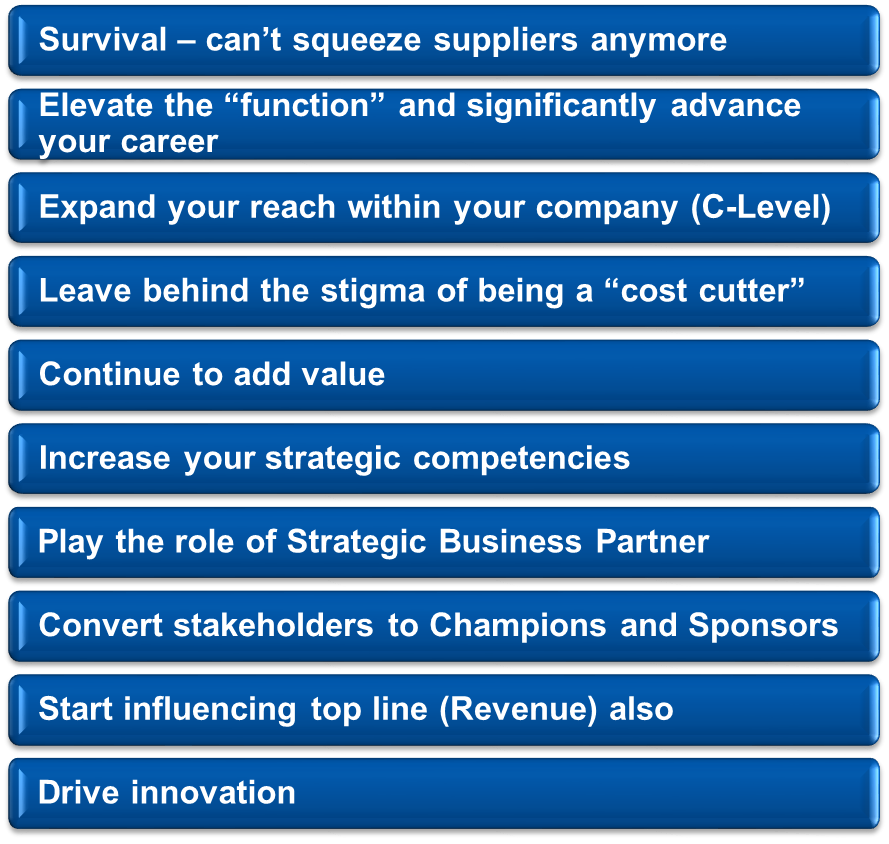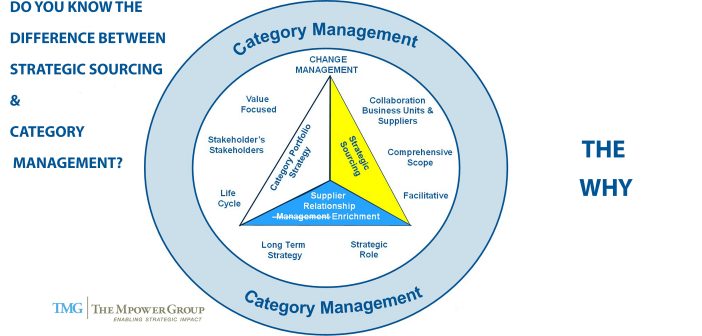While the debate continues on the difference between Strategic Sourcing and Category Management (we’ve already settled the debate for our clients years ago), I thought it was important to focus not just on the what, but also the why. Why would you even consider making the transformation to Category Management? After all, for those of you that have embarked on the journey, it is apparent that it is not an insignificant effort. It requires a shift change not only in the content, but also the context. It requires a major shift towards strategic competencies – something not in abundance in most Sourcing/Supply Chain organizations.
Here is a slide that I recently used at an executive workshop of senior leaders from many different companies and it struck a chord with a large number of them:

Some of these are obvious but others requires some explanation. Clearly, continuing to squeeze suppliers is a strategy of diminishing returns and as we have discussed many times before, it leads to a loss of value for many stakeholders. Changing the perception of our function and becoming far more valuable as a functional leader is an extremely attractive proposition. By its very nature, Category Management means significantly more influence within the company because we are starting to focus on our stakeholder’s stakeholders. The label of cost cutter has plagued our function for a very long time and the shift to Value Drivers allows us to finally grow beyond that. Notice that I’m not advocating abandoning cutting costs as a goal but making it relative to the many other Value Drivers. By the way, we will never get the chance to focus on costs unless we focus on our stakeholder’s Value Drivers – they won’t let us in the door. The move to Category Management forces us to enhance our own and our department’s strategic competencies. That makes our employees in high demand within the corporation because those strategic competencies are in high demand and they are applicable in every other function. Category Management allows us to play the role of a strategic business advisor – a role we have long clamored for. Because of its intrinsic nature and fundamental difference from strategic sourcing, it means we are invited by our stakeholders to help them achieve their goals. They see the strong linkage between what we have to offer and their needs.
Having and managing stakeholders to be supportive is great but converting them to Champions and Sponsors is game changing. The former is a passive role while the latter is a proactive role. Imagine the COO insisting that you be there for critical corporate initiatives. Shifting our focus from the bottom line to the top line as well is enabled only by making the shift to Category Management. I am pleased to report that after many years of preaching this point, we are finally seeing the needle move amongst the leaders of our profession. In just about every recent PERT workshop, this concept is becoming more and more accepted and common. And because Category Management is far more collaborative in nature, both internally and with suppliers, driving innovation becomes far easier, not easy but easier.
While all of these reasons may not resonate with every single one of you, I’m sure a number of them will. What are some of your drivers to take on this Transformation to Category Management. Have you shared them within your department? With you stakeholders? With your executives? Would love to hear from you and what are some of your reasons.


